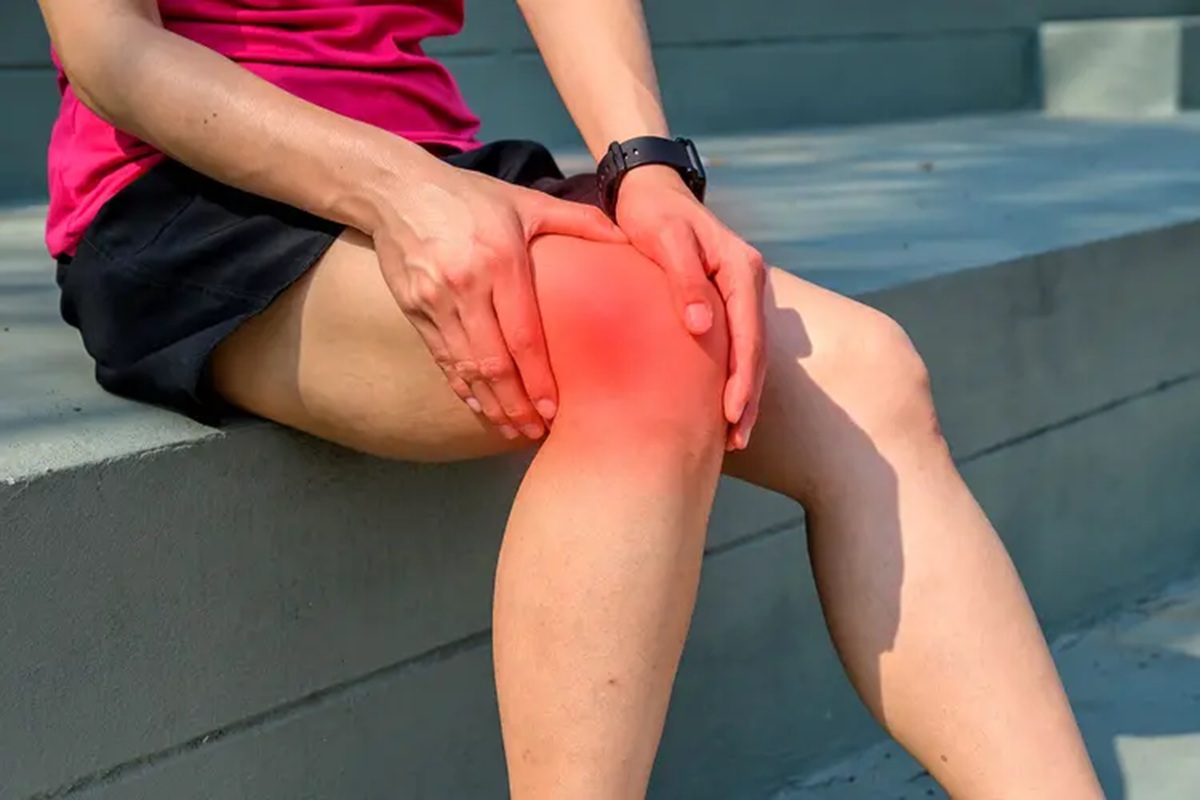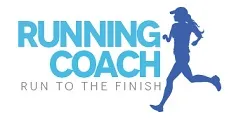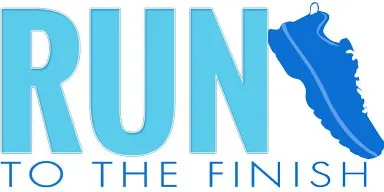Pain in the IT band can sideline even the best of athletes and, unfortunately, IT band syndrome is all too common among runners and cyclists. Luckily there are IT Band exercises (along with lots of hip and glute work) that can help!

If you’ve been around these parts for a while, you’re probably aware that I’m obsessed with helping people run injury free. But I’m especially fond of talking about IT Band Syndrome.
In 2007 I learned the hard way that your IT band is not something to play around with. Sure, you can go to a doctor and get a steroid shot, and it might get you through your race day or halfway through your race day, only to then be sidelined for six months like I was.
I’ve heard that story from a number of runners, and I don’t want it to be you.
Just writing this sends a shiver down my back, my nose wrinkles, and I remember the years cycling through great runs and searing pain.
After years of helping friends and those I coach overcome IT Band Syndrome, I finally compiled all the at-home remedies, exercises, and truly workable advice into an 80-page eBook.
You can download it now, but this article includes some of the best IT band exercises from my eBook that’ll do wonders for that persistent pain.
As you get stronger and your IT Band pain diminishes, these exercises are something you can build into other workouts, like doing a quick round between upper body exercises when strength training.
What is the IT Band?
The Iliotibial (IT) band is a thick band of fascia (connective tissue) that runs along the outside thigh all the way from your hip to your knee.
It attaches to the gluteus maximus and tensor fasciae latae on the hip side and connects to the tibia on the lateral side. It works to keep the knee stable when running.
Iliotibial band syndrome (ITBS) happens as a result of tightness due to repetitive movements. This is why runners and cyclists tend to, unfortunately, suffer from this pain more than others. In this way, it’s an overuse injury.
As the tissue tightens, it begins to rub against your bones, causing friction. This rubbing causes irritation and inflammation, which can result in intense, chronic pain in your knee or hip.
Unfortunately, the pain can get intense enough to sideline even the toughest athletes.
6 Best IT Band Exercises
As we learned, the IT band goes from your hip to your knee, which is why people have pain in different places. Some people feel it really sharply in their knees, while others feel it all the way up their leg or into their hip.
It’s important to know that this is not a muscle that we are trying to stretch. This means that you cannot make it longer, and you cannot rely solely on foam rolling to fix the issue.
What we actually need to do is take care of the muscles that are around it that are tight or the imbalances, which are throwing your body off. That’s what’s gonna fix your IT band for good.
So please, do these moves, but remember that you need to work on your entire core strength to resolve it!
These 6 exercises are perfect and will help resolve your IT band problem just like they’ve helped me all these years.
Download my free IT Band Recovery Checklist to get started on recovery >>
1. IT Band Lunge Matrix
First up is my favorite it’s the lunge matrix, which you can add into your warm-up before every run to immediately engage your hips, your glutes, and warm everything up. As you’ll see you’re just moving in multiple directions, which is obviously different than running, where we only go forward.
The key to these moves is that your planted foot remains pointing forward. If you rotate that foot, you’re losing the strength that’s being developed in that leg and changing the range of motion.
The Matrix consists of 5 lunges that work your hips in every direction and might just challenge your balance a bit too!
- Front Lunge
- Front Crossover Lunge
- Front Rotational Lunge
- Backward Lunge
- Side Lunge
The following video provides a demonstration of the lunge matrix.
2. IT Band Roll Release
The second exercise that you can also do before your runs is to spend a little time rolling your foot over a PT ball.
While this may sound weird, part of what we want to do is release tension throughout the entire body, and that’s gonna help our IT band release. Rolling your foot over the hard ball helps to release those muscles all the way up your leg.
3. Single Leg Bird Dip
This third exercise is a single-leg movement.
We sometimes forget that running is a single-leg movement,t so we need to strengthen each side so that it can work independently. Here, we’ll be doing some strengthening exercises with a single-leg bird dip.
Begin by standing with your hands clasped behind your head. Shift your weight to your left foot and slightly bend your knee.
Lift your right foot off the floor and bend your hips. As you extend your right leg behind you, lower your chest toward the ground. As you draw your right leg through, press yourself back up.

Finally, bend your right knee and bring it to your chest. Repeat on the other side.
All of this is forcing us to engage our core and really keep our balance; it’s also working to strengthen all of those muscles. Single leg exercises are particularly good because they help resolve muscle imbalances.
4. Revolved Triangle
These next three exercises are actually moving into the stretching and the relaxation a little bit more. This exercise is a revolved triangle, which you’ve probably seen in yoga clas,s but I need to make sure you’re doing it right.
As a starting position, make sure your toes are pointed in one direction, others straight forward.
First, we lean from our hips and then rotate down. We’re not collapsing; instead, we’re staying with our core engaged, and you should feel this stretching this entire leg.
If it doesn’t, imagine trying to push that leg away from you.
Come down a bit more and then rotate up. Hold this position for 30 seconds to a minute, or whatever feels good

5. Resistance Stretching
The next one is called resistance stretching. It’s not something that a lot of people are doing but it’s crazy beneficial. Resistance stretching is an amazing option because it provides you with strength, flexibility, and mobility all in one.
In this particular stretch for your IT band, start by lying on your back. With your right hand, grab your right ankle, reaching from the inner side of your thighs. In this exercise, we’re doing two things.
First, I’m creating resistance with my hand as I push my foot upward. Do that about ten times then reverse the grip on your heels and this time create resistance with your hand as you try to push down.
So on days when you’re feeling really good, do ten reps of that and then combine the move, by first creating resistance down and then pressure up.
Checkout this video for a demo of multiple moves described above!
6. 90-Degree Lying Stretch
And finally, possibly my favorite IT band exercise!
All you have to do is lie down. Preferably, I recommend finding a bench that’s about 90 degrees, put your legs up and simply relax.
What happens is we allow our hips to start to settle back in and everything to release and relax, especially after sitting in a chair all day and the tightness that causes.
If you’re currently experiencing IT Band pain ,then you may not yet be ready to perform these movements. While it’s important to continue movements to recover (no rest will not resolve this), it is not helpful to continue aggravating the muscle.
Who Gets IT Band Pain?
IT band pain is common in runners and cyclists due to the repetitive nature of the sports. The most common causes of pain include overtraining, gluteus medius muscle weakness, and tight hip flexors that place excessive tension on the IT band.
This injury may result from starting a running program too quickly or increasing mileage too quickly.
Inadequate recovery time between workouts and neglecting regular lower body stretching are also risk factors for developing lateral knee pain.
Other risk factors include running on surfaces with a slope, running downhill, wearing heels, or wearing running shoes that are worn out. For more in-depth information on the causes of IT band syndrome, check out my complete IT Band recovery guide.
If you feel like ITB isn’t exactly what you have going on, check out Tight TFL signs. It’s also goingto pull on things and show up around your hip.
What to Do If IT Band Continues to Hurt?
If your IT band pain persists, consult a physical therapist to identify and address probable causes.
Differences in right and left leg length, muscle weakness in your hips, glutes, or core that affects normal gait mechanics, and even ill-fitting shoes could all be part of the reason why your IT band pain won’t go away.
Even simple things like running the same route every day could be a factor, especially when combined with overuse.
Figuring out exactly what’s causing your IT band pain can help you resolve it better with the help of a personalized physical therapy plan.
Ready to finally heal your IT Band?
Tired of the cycle of healthy then injured?
It doesn’t have to be so hard to fix it!
Check out the Ultimate IT Band Solution >>
Looking for more training tips and guides?
- Best Walking Shoes for Plantar Fasciitis (Tested By Someone Who Actually Has It)
- 5 Must Do Hip Stretches for Runners: Releasing Tight Hips
- Achilles Pain While Running? Common Causes and Best Shoes
Other ways to connect with Amanda
Instagram Daily Fun: RunToTheFinish
Facebook Community Chatter: RunToTheFinish
Sign Up to Receive a Weekly Newsletter with Top Running Tips and Laughs



 Headache After Running (8 Main Causes + Solutions)
Headache After Running (8 Main Causes + Solutions)
This is a great resource! IT band pain is something runners often feel so helpless against yet, as you’ve shown, there’s a lot that can be done about it.
Diana
http://betterthanalive.com
I’ve always got a tight IT band. Do you think it could be issues I’m having elsewhere that causes it? I.e muscle imbalances putting extra strain on it?